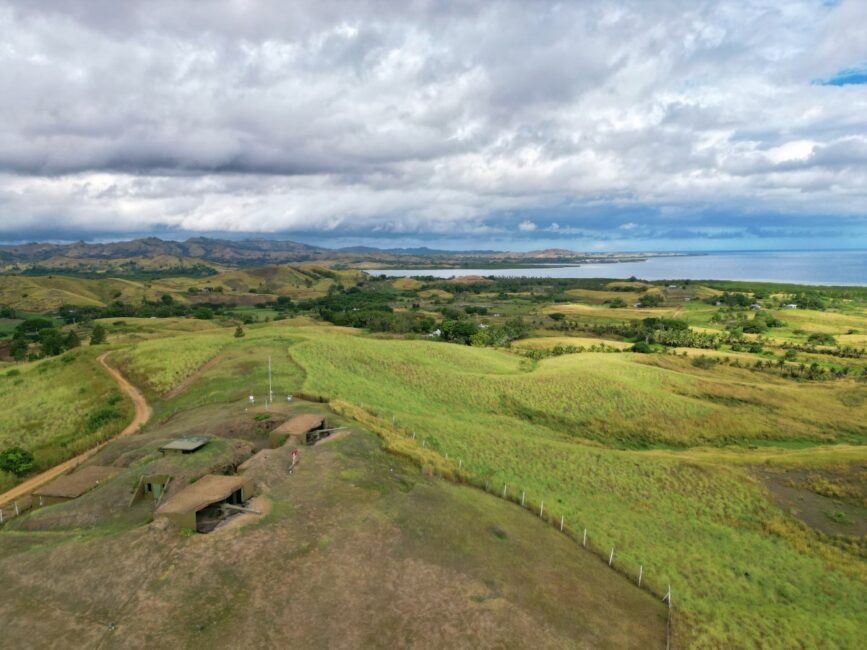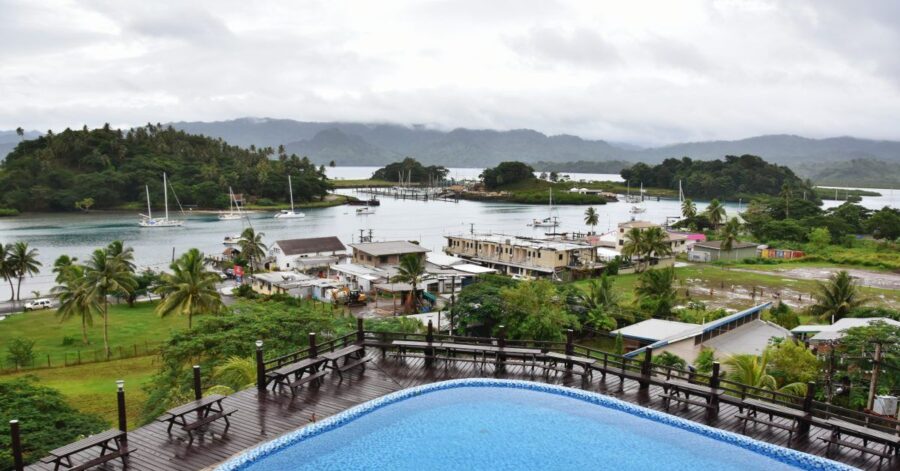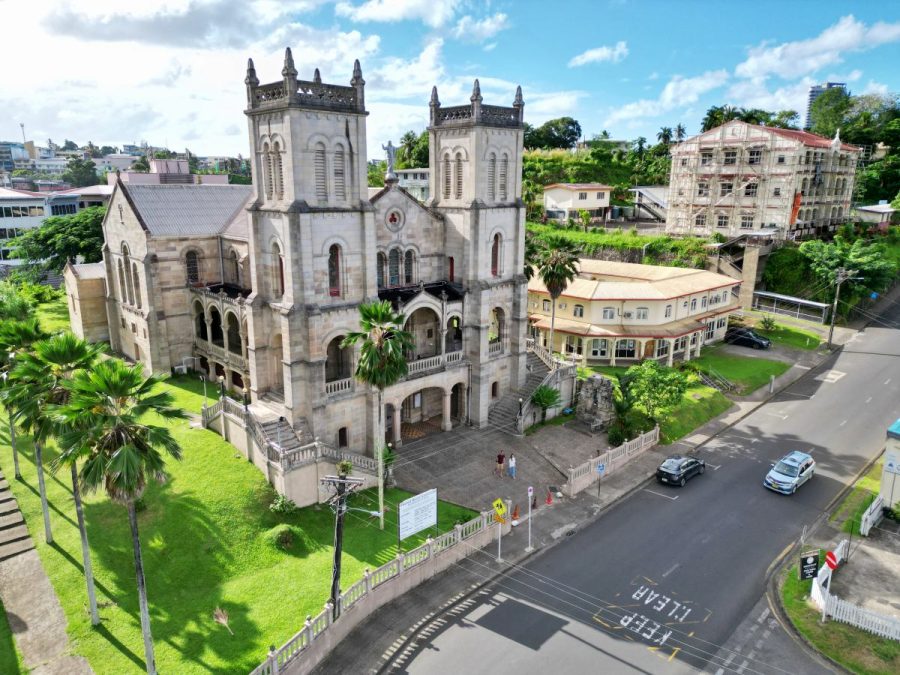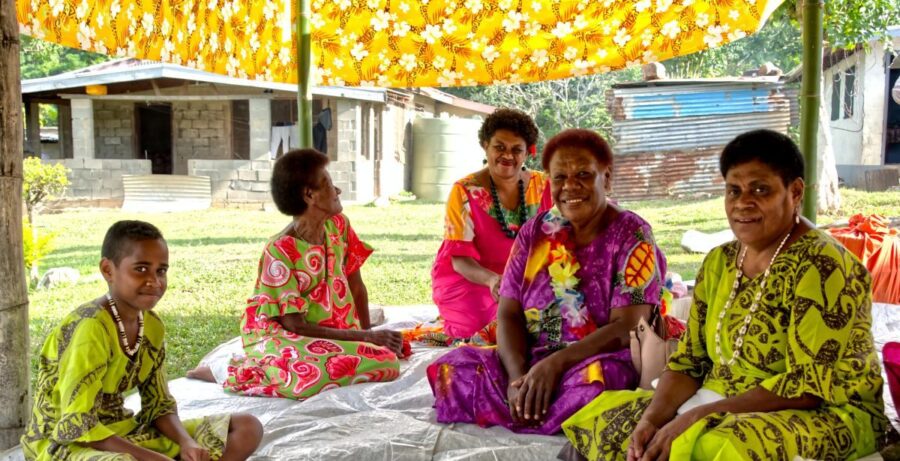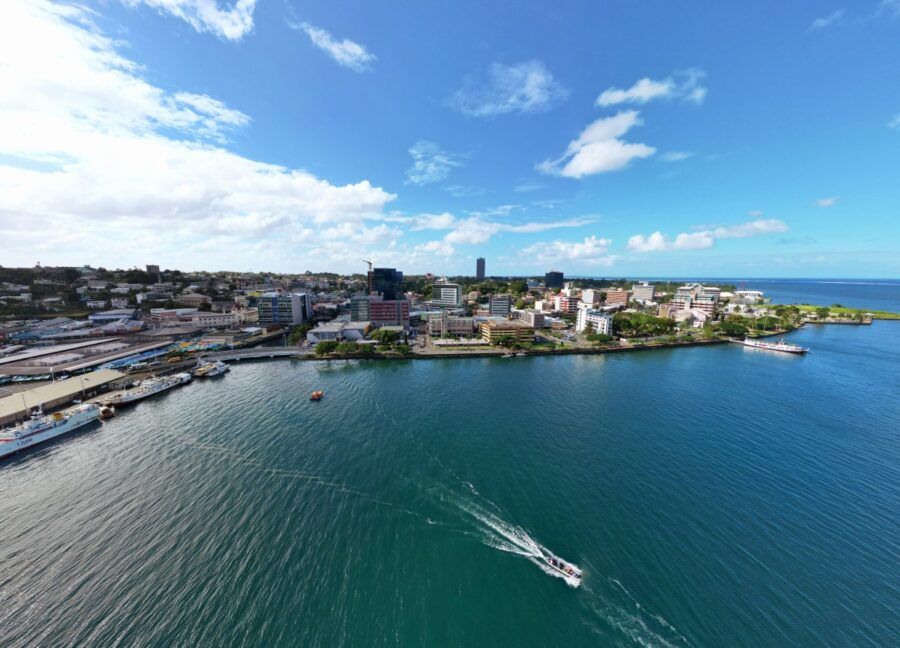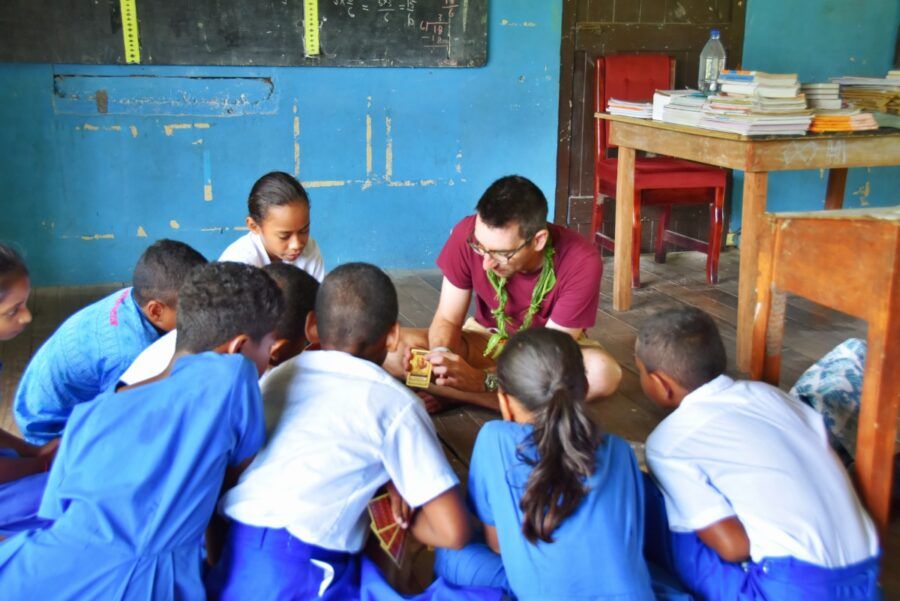Experiences and Sites to See if You Want to Learn the History of Fiji
With a colourful history of island explorers, tribal settlers, Tongan invasions, colonialism, military coups, and more, Fiji is a fascinating nation to explore its history. Many of the historic sites in Fiji can still be visited today, as well as experiences to see centuries-old traditions still being played out.
Seeing the historical sites of Fiji will take you far and wide across the island nation, but even just seeing a few will open your eyes to how things used to be and how they influence Fiji today.
Table of Contents
1. Udre Udre’s Grave
Also known as the Tomb Of Udre Udre (pronounced “Un-dre”), this location offers a great insight into the history behind the Fijian culture. Udre Udre was a feared chief during Fiji’s cannibal period and is said to have killed and eaten over 800 victims.
Located in Rakiraki, Udre Udre’s Grave is surrounded by 800 stones representing each of his victims as a testament to one of the world’s most prolific cannibals.
Check out more things to do around Rakiraki in our 25 Best Things to Do on the Suncoast.
Location: Rakiraki, Suncoast, Viti Levu. Just off the Kings Road, 100 m (109 yd) west of the Vaileka turn-off.
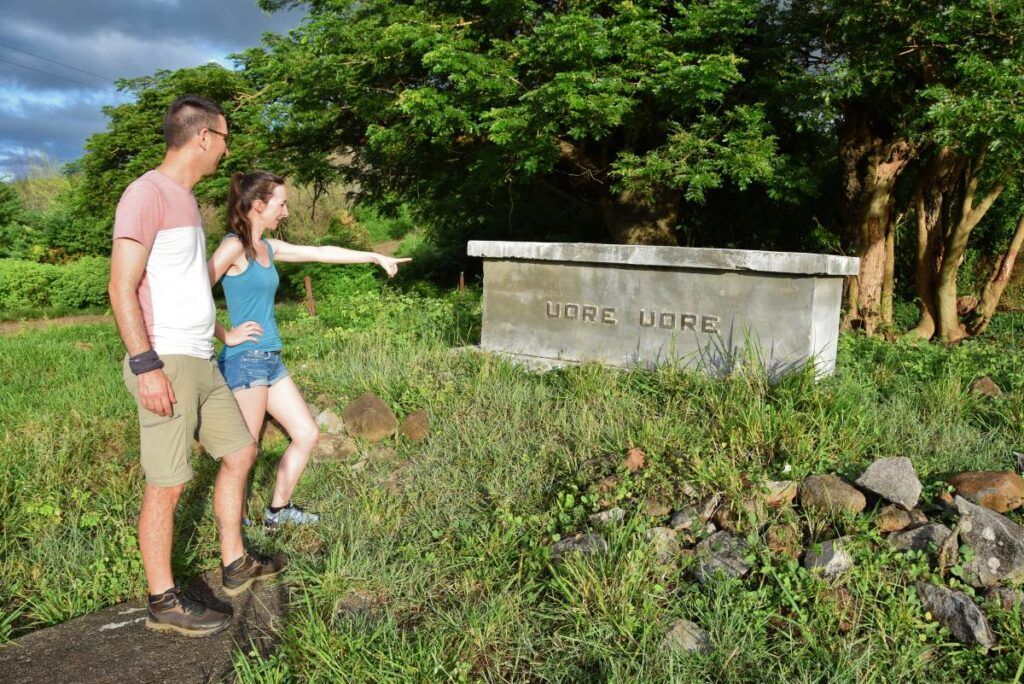 © FijiPocketGuide.com
© FijiPocketGuide.com
2. Levuka, Fiji’s Former Capital
Located on the small island of Ovalau, Levuka is a UNESCO World Heritage Site as Fiji’s former capital until 1877. The town is considered one of the most important historical spots in the country for Fiji’s colonial history.
While walking around the town is like a living museum, there is an actual museum at the Levuka Museum & Community Centre that is well worth checking out – see 7 Best Museums & Art Galleries in Fiji.
Check out more things to do in the area in our 20 Best Things to Do in Levuka & the Lomaiviti Islands.
Location: Levuka, east coast of Ovalau Island, Lomaiviti Islands.
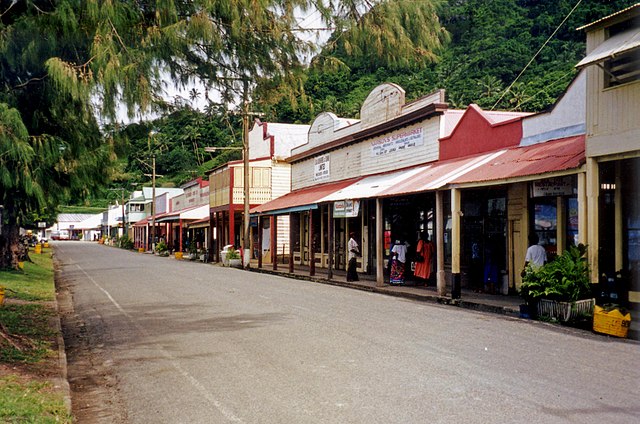 © Merbabu on Wikipedia
© Merbabu on Wikipedia
3. Tavuni Hill Fort
Perched atop a hill in the Upper Sigatoka Valley, the Tavuni Hill Fort is a fascinating national archaeological site that’s well worth a visit. This 18th-century fortification, built by Tongan chief Maile Latumai, offers a captivating glimpse into pre-colonial Fijian life.
As you explore the partially restored fort, you’ll be treated to spectacular views of the Sigatoka Valley from its 90-metre-high limestone ridge.
History buffs and culture enthusiasts will love discovering the ancient house foundations, ceremonial grounds, and the intriguing vatu ni bokola (head-chopping stone).
Location: Naroro, Coral Coast, Viti Levu. Approximately 4.5 km (2.8 mi) north of Sigatoka.
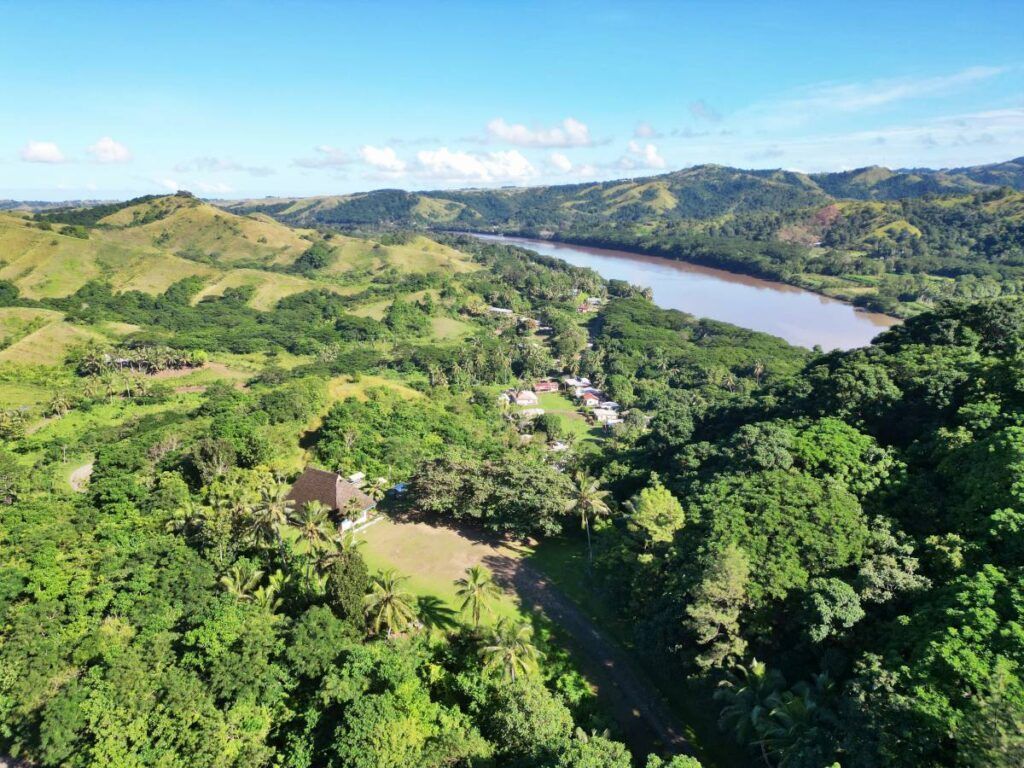 © FijiPocketGuide.com
© FijiPocketGuide.com
4. Naihehe Caves
Bathed in history from tribal wars to cannibalism, the Naihehe Caves are literally the whole history of Fiji, from geology to today’s tourism impact. The tour is quite adventurous, but travellers are rewarded with memorable stories and views of the stunning limestone caves.
You will truly feel like you’re in the heart of Fiji. Find the Naihehe Caves on the Coral Coast, as well as all these other amazing things to do! Visits to the caves are available with Off Road Cave Safari and Coastal Inland Tours.
Location: Toga, Coral Coast, Viti Levu. Tours to the cave depart from Sigatoka town centre (inside the Tappoo store). Transfers are available from Coral Coast resorts.
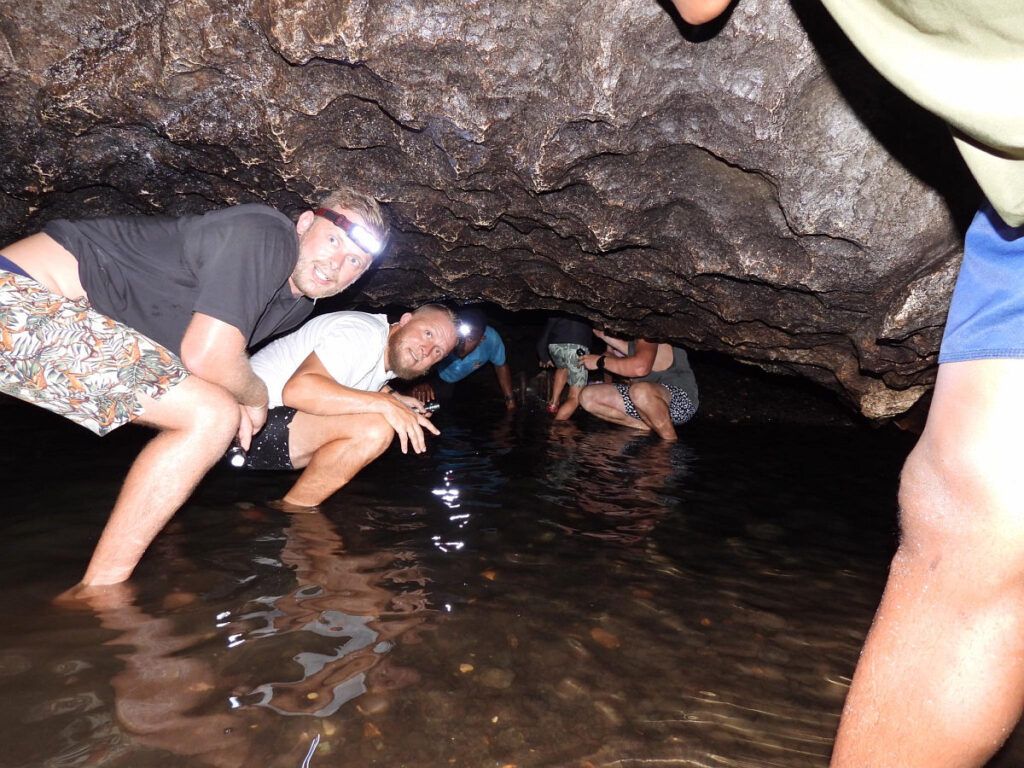 © Coastal Inland Tours
© Coastal Inland Tours
5. Momi Bay and the Momi Guns
The Momi Battery Historic Park is one of the most modern historical features of Fiji. Back during World War II, Fiji had to protect itself from an invasion that would likely happen over the Navula Passage. So, the US and New Zealand forces built an impressive battery of guns to protect the area.
Fortunately, they were only used three times, and not for the reasons you’d expect (you’ll learn more when you get there). Find Momi Bay in Nadi, as well as these 25 Awesome Things to Do in Nadi.
Location: Momi Bay, Nadi, Viti Levu. Located between Momi and Nabila, approximately 30 km (19 mi) south of Nadi.
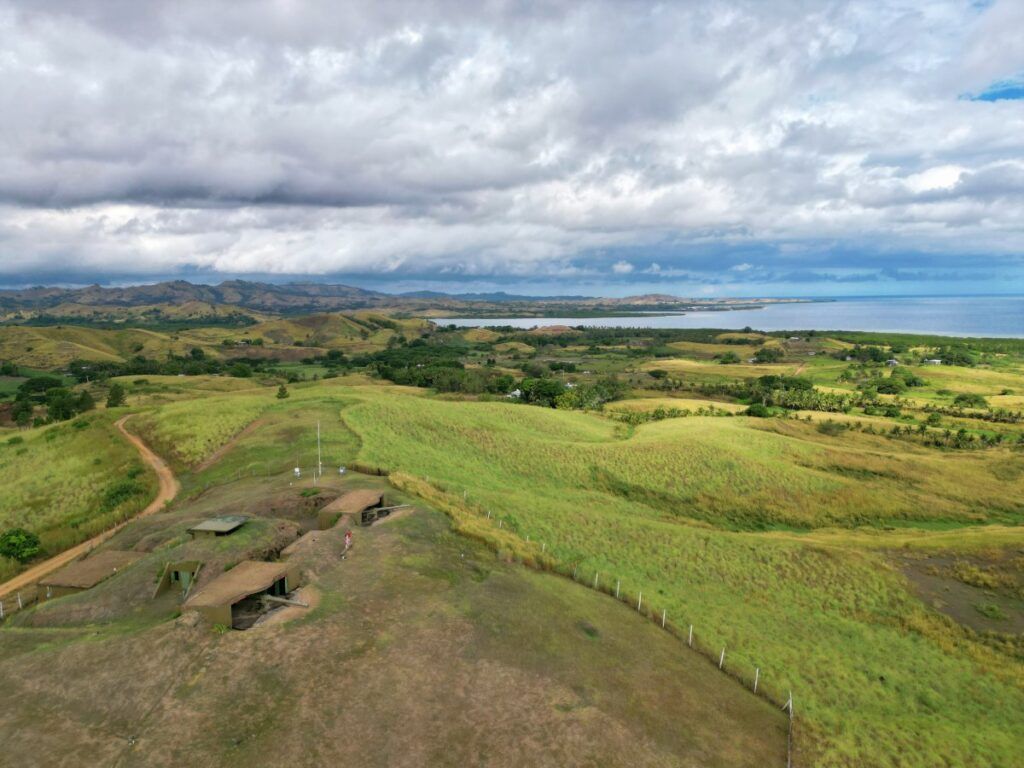 © FijiPocketGuide.com
© FijiPocketGuide.com
6. Vatulele Island
For those lucky enough to get to Vatulele Island, just below Viti Levu, visitors might get a chance to see the petroglyphs, which are traditional Fijian rock art.
The 3,000-year-old drawings feature a face and other items and are only visible if staying in the local (and currently closed) resort. The island itself is an extremely traditional Fijian island well worth visiting if you get the opportunity.
Location: Vatulele Island, between Beqa Island (Pacific Harbour, Viti Levu) and Kadavu Island.
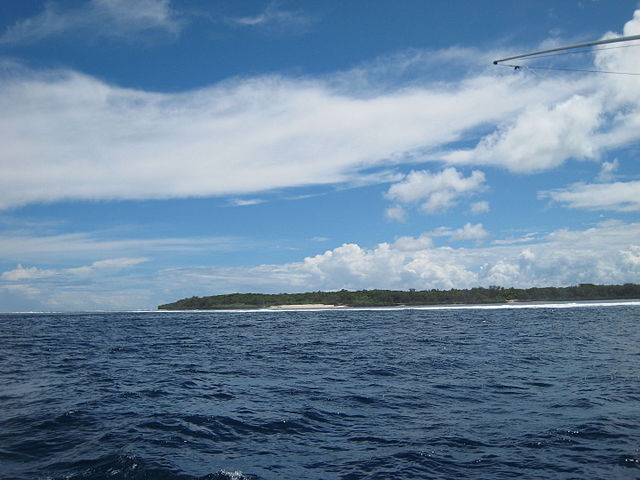 © catlin.wolfard on Wikipedia
© catlin.wolfard on Wikipedia
7. Nakama Hot Springs
A prime example of the geological history of volcanic Fiji, the hot springs of Savusavu, Vanua Levu, are a powerful reminder of what created Fiji in the first place. Bursting out of the ground and the sea below, the steam vents are unmissable.
The boiling water holes will burn bathers, so the locals often use them to cook food. Check out the various interpretation panels to learn more about the natural history of the area – find out more in Where to Find Hot Springs in Fiji.
Plus, check out 20 Amazing Things to Do on Vanua Levu.
Location: Nakama Road, Savusavu, Vanua Levu. Behind the Max Value store and across the road from the Savusavu Hot Springs Hotel.
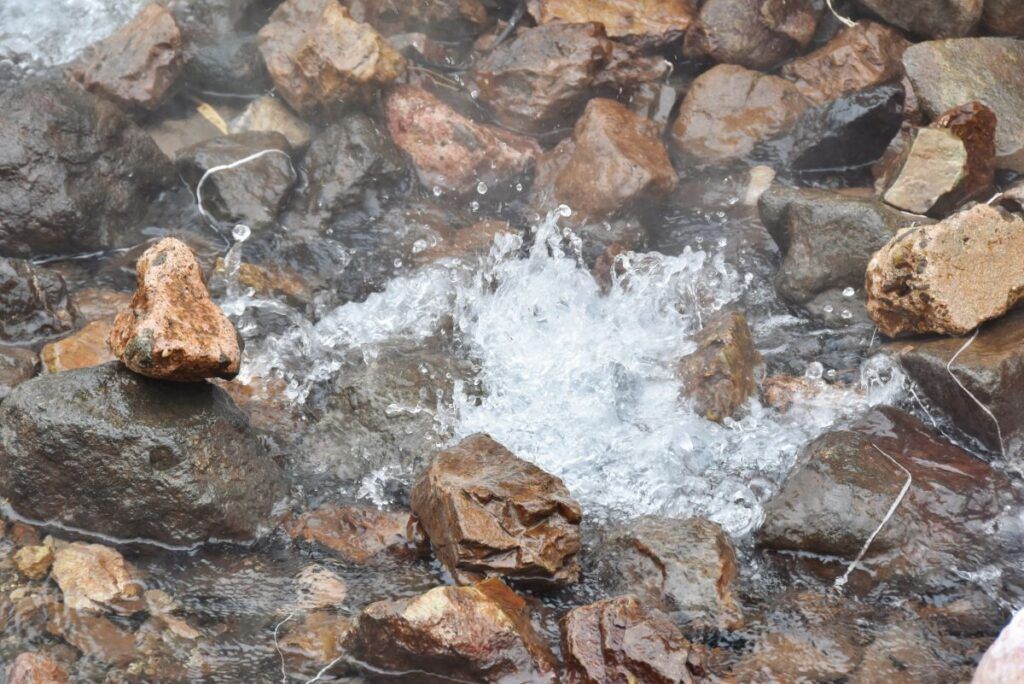 © FijiPocketGuide.com
© FijiPocketGuide.com
8. Sacred Cobra Rock
Housed within the Naag Mandir Temple that was built around it, the sacred rock cures the sick and improves sexual prowesses, according to the locals. The rock, which is surrounded by offerings, is a great place to embrace local legends and learn about local beliefs.
Plus, with so many colours, the temple is a perfect photo stop during your trip around Vanua Levu.
Location: Wainikoro Road, Nagigi, Vanua Levu. approximately 14 km (8.6 mi) from Labasa.
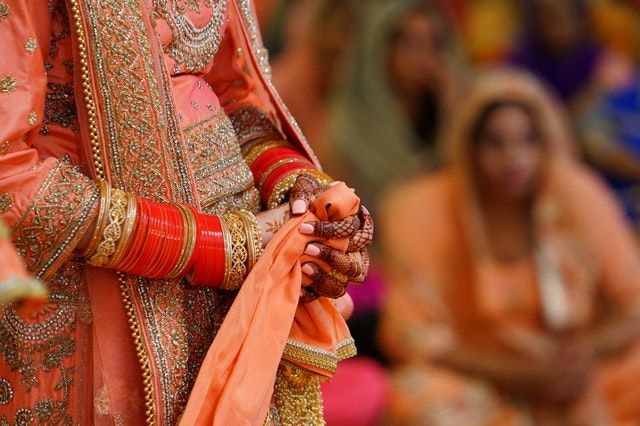 © Pexels
© Pexels
9. Join a Kava Ceremony
Kava is the traditional Fijian drink made of yaqona roots ground into a powder and then mixed with water. A kava ceremony comprises of the kava presentation and then drink with the village elders.
Show ceremonies are organised nightly by the largest resorts and traditional ones happen in the evenings when visitors stay in a Fijian village. Each kava ceremony helps keep traditions alive in Fiji.
Location: All over Fiji! See the 10 Best Ways to Experience the Fijian Culture for recommendations.
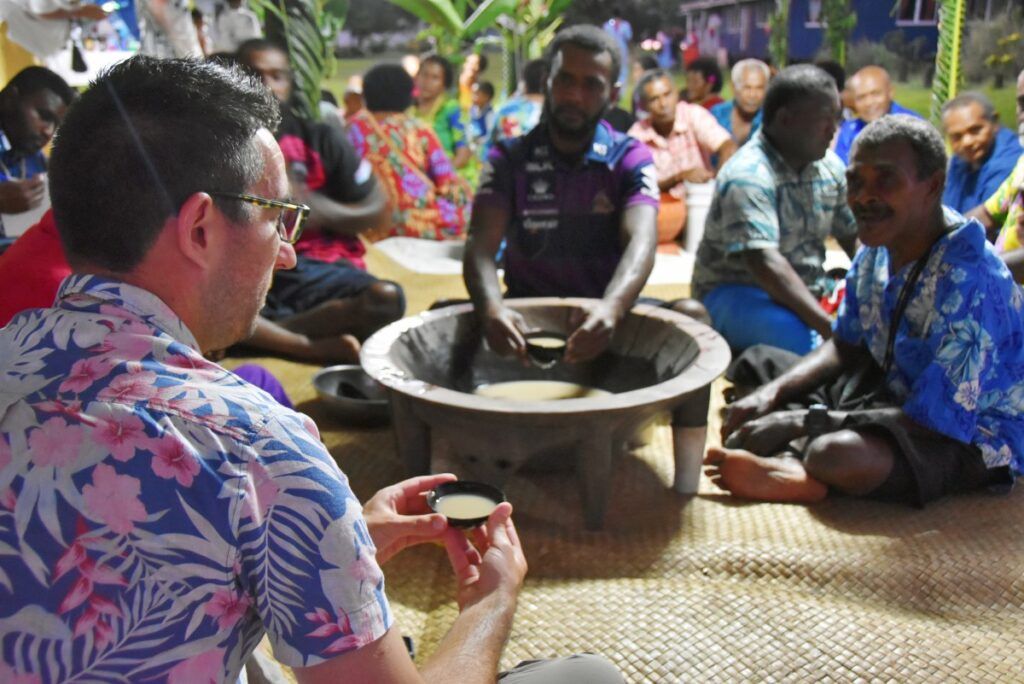 © FijiPocketGuide.com
© FijiPocketGuide.com
10. Village Visits and Village Stays
One of the best ways to see what the Fiji past and future is is to visit one of the villages of the 333 islands that makes up Fiji. There, you will be able to see for yourself the real Fijian way of life, join the locals for a spot of fishing, help them cook traditional Fijian food, and even follow them to church.
The kids are super friendly, and the living conditions are humbling, making it a real human experience – check out Fiji Village Etiquette: What to Do When Visiting a Fijian Village.
Location: All over Fiji! Check out the 10 Best Village Tours in Fiji and 10 Authentic Village Stays in Fiji for recommendations.
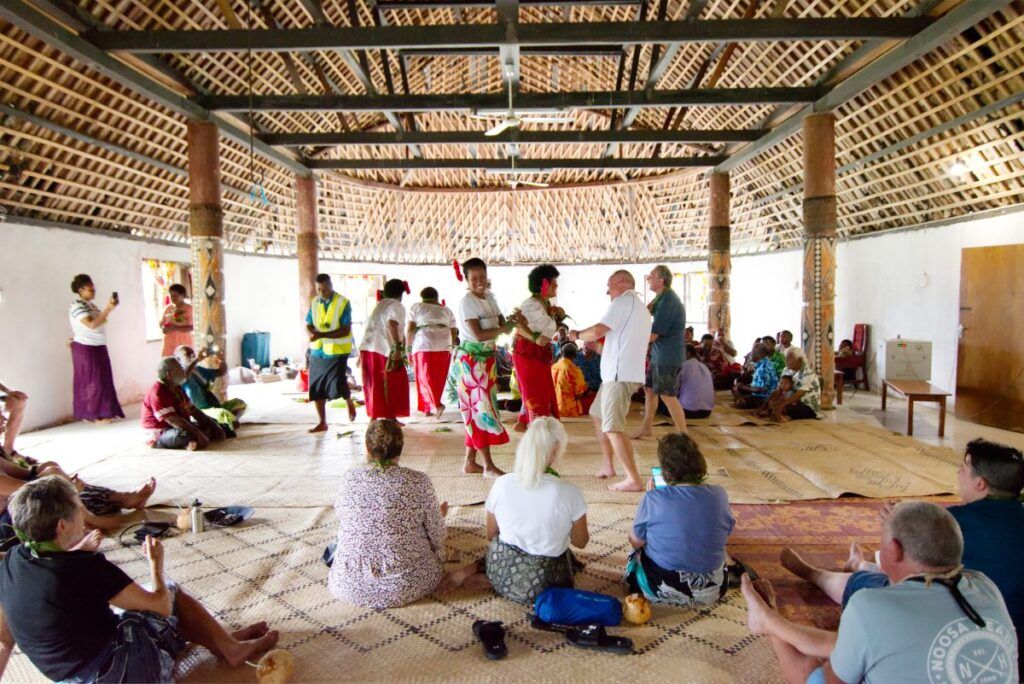 © FijiPocketGuide.com
© FijiPocketGuide.com
10 More Historical Places in Fiji
As if our previous list of 10 historical places in Fiji wasn’t enough to satisfy your inner history buff, we’re back with 10 more fascinating sites to explore! From ancient villages to colonial remnants, these locations offer a deeper glimpse into Fiji’s rich past.
- Pase Matei (Taveuni): The first missionary landing spot on Taveuni is known as Pase Matei. This site marks the arrival of the London Missionary Society.
- Nakobo Village (Vanua Levu): Known for its history and mythology tied to the Cakaudrove province. It’s the home of the Traditional Warriors of the Tui Cakau, one of the paramount chiefs of Fiji. The village also has connections to notable Fijian legends, such as the Legendary Shark God, Dakuwaqa. Additionally, the village is famous for its role in the history of Christianity, as it features a memorial for Reverend Thomas Baker, one of the last missionaries to be eaten in the cannibal era.
- Makogai Island (Lomaiviti): Once home to a leper colony established by the British colonial administration in 1911. The colony treated leprosy patients from all over the Pacific until its closure in 1969. Visitors can still see the remains of the colony’s buildings and graves.
- Sigatoka Sand Dunes National Park (Coral Coast): Fiji’s first national park, known for its archaeological and historical significance. Human skeletal remains and pottery fragments have been discovered here, some dating back over 3,000 years. It’s considered a burial site of the first settlers in Fiji.
- Vunisavisavi (Vanua Levu): One of Fiji’s most sacred villages and the ancestral home of the first Tui Cakau. The village contains the Vatu’alu’aku (Stone Whisper) that whistles to warn of incoming enemies or evil.
- Wairiki Catholic Mission (Taveuni): Built in 1907, this church overlooks Somosomo Strait and commemorates a battle between the Taveuni warriors and invading Tongans in the 17th century. The church was constructed as a thank-you to the French missionaries who helped the Taveuni warriors with battle strategies.
- Lautoka Sugar Mill (Lautoka, Suncoast): One of the oldest and largest sugar mills in the South Pacific, crushing and extracting syrup from sugar cane before purifying and drying it into crystals.
- Suva Town Hall (Suva): Originally known as the Queen Victoria Memorial Hall, this colonial gem opened its doors in 1905 as a tribute to the late British monarch. See more of the 10 Best Historical Sites in Suva.
- Viseisei (Vuda, Nadi): Thought to be the first landing site of the Fijian ancestors. Elaborate chief’s house and monuments mark the area.
- Bilo Battery Gun Site (Suva/Pacific Harbour): Built in 1941 during World War II by the United States, New Zealand, and Australian forces, this site housed four guns intended to defend Suva Harbour. Though never used in combat as the Japanese never invaded Fiji, it remains one of the largest fortifications in Fiji.
- Lomolomo Guns (Nadi): A free attraction and incredible viewpoint lie at the Lomolomo Guns at the foot of the Sabeto Mountains.
There you have it, history enthusiasts! These 10 additional historical sites in Fiji offer a captivating journey through the islands’ past. From ancient villages to World War II relics, each location tells a unique story of Fiji’s rich cultural heritage.
So, pack your curiosity and set off on a historical adventure!
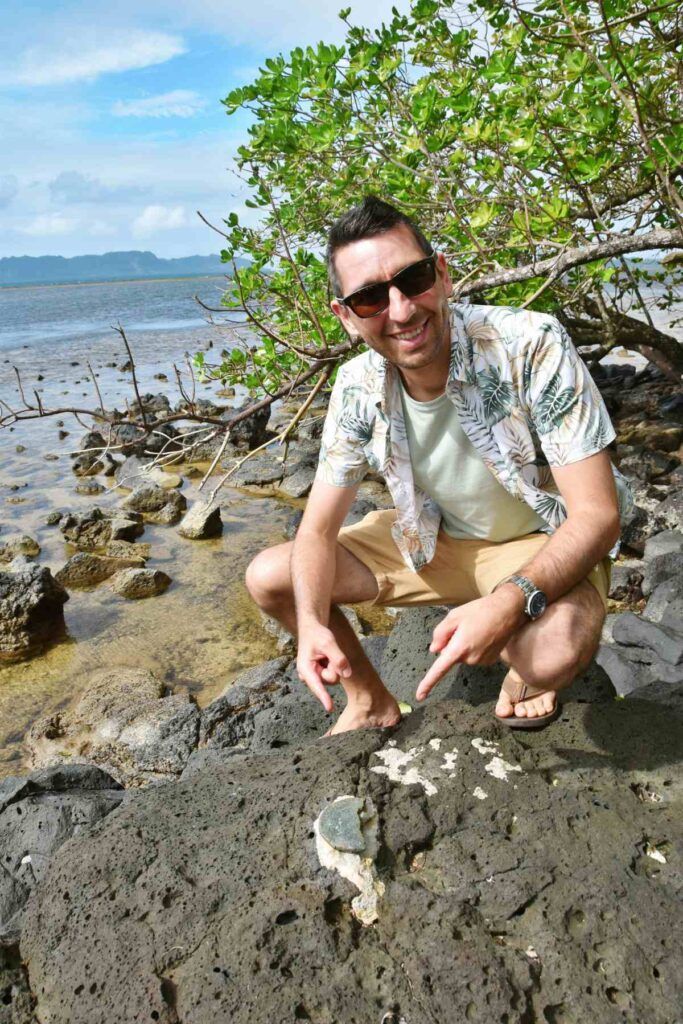 © FijiPocketGuide.com
© FijiPocketGuide.com
More About Historical Sites in Fiji
That’s it for our guide to historical sites in Fiji; for more information about Fijian culture and history, check out the following articles:
- 10 Fijian Words You Need to Know When Visiting Fiji
- 5 Fascinating Museums in Fiji
- 15 Fun Facts About Fiji
Finally, if there’s anything we’ve missed, you’re likely to find it in The Complete Travel Guide to Fiji.
Sources:
The information in this guide has been compiled from our extensive research, travel and experiences across Fiji and the South Pacific, accumulated over more than a decade of numerous visits to each destination. Additional sources for this guide include the following:
- Tourism Fiji (General travel advice - Updated [2025])
- Fiji Hotel and Tourism Association (Tourism trade association - Updated [2025])
- SPTO (Pacific tourism advice - Updated [2025])
- Ministry of Tourism and Civil Aviation (Tourism statistics - Updated [2025])
- Land Transport Authority (Road safety advice - Updated [2025])
- Fiji Immigration (Visa and immigration advice - Updated [2025])
- Fiji Revenue & Customs Service (Customs and visitor taxes - Updated [2025])
- Biosecurity Authority of Fiji (Biosecurity advice - Updated [2025])
- Fiji Meteorological Service (Weather forecast and warnings - Updated [2025])
- Fiji Bureau of Statistics (Statistics and travel data - Updated [2025])
- Safe Travel (New Zealand travel advisory for Fiji - Updated [2025])
- Smart Traveller (Australia travel advisory for Fiji - Updated [2025])
- Travel.State.Gov (U.S. travel advisory for Fiji - Updated [2025])
Our editorial standards: At Fiji Pocket Guide, we uphold strict editorial standards to ensure accurate and quality content.

About The Author
Robin (Ruveni) C.
This article was reviewed and published by Robin, the co-founder of Fiji Pocket Guide. He has lived, worked and travelled across 16 different countries before settling in the South Pacific, so he knows a thing or two about planning the perfect trip in this corner of the world. Robin is also the co-founder of several other South Pacific travel guides and is a regular host of webinars with the South Pacific Tourism Organisation.
